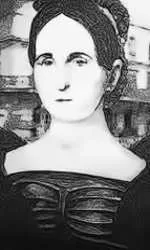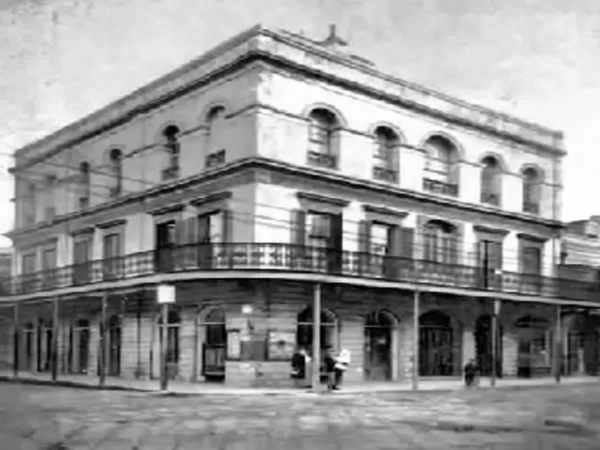Nestled on the corner of Royal Street and Governor Nicholls Street in New Orleans’ historic French Quarter stands the infamous LaLaurie Mansion, a site that has been shrouded in mystery and horror for over 150 years. Known as one of the most haunted locations in the French Quarter, the mansion has a dark history that continues to captivate and terrify all who hear it. Today, this legendary home is a luxury apartment, but the story of its original owner, Madame Delphine LaLaurie, is far from forgotten.
The Dark Past of Delphine LaLaurie

Marie Delphine Macarty was born in 1775 into a wealthy Creole family in New Orleans, a city with a rich tapestry of culture and social hierarchy. Her cousin was the mayor of New Orleans from 1815 to 1820, adding to her social prominence. Her life seemed prosperous—she married three times, with her third husband, Dr. Leonard LaLaurie, being a physician much younger than her. In 1832, the couple built the three-story mansion on Royal Street, where they lived with two of Delphine’s daughters and several slaves.
While Delphine presented herself publicly as kind and caring, with a particular concern for her slaves’ well-being, rumors soon spread throughout New Orleans of her cruel and abusive treatment of the enslaved people in her household. Reports circulated of their emaciated and wretched appearances, leading to a lawyer visiting the home to remind Delphine of her obligations under local laws governing the treatment of slaves.
The Horrific Discovery and Public Outcry
The horror at the LaLaurie mansion came to light on April 10, 1834, when a fire broke out in the kitchen. Local residents, noticing the smoke, rushed to help and attempted to evacuate everyone from the house. The LaLauries, however, refused to give them the keys to the slave quarters. When the rescuers finally broke down the door, they were horrified to find seven slaves in various states of mutilation, suspended by their necks, with their limbs stretched and broken. According to the New Orleans Bee, the slaves had been imprisoned for months, deliberately tortured to prolong their suffering.
Judge Jean-Francois Canonge, who witnessed the aftermath, described a woman wearing an iron collar and an elderly man with a deep head wound, barely able to walk. When Canonge confronted Dr. LaLaurie about the slaves’ condition, he was met with indifference. It later emerged that the fire had been set by a cook who was chained to the stove, desperate to draw attention to the horrors occurring within the mansion.
The public reaction was swift and furious. A mob stormed the LaLaurie mansion, destroying much of the property. The slaves were taken to a local jail, where they were put on display for the public to witness their suffering. Over 4,000 people came to see the evidence of the unimaginable cruelty inflicted upon them. Amid the uproar, the LaLauries fled the city, allegedly making their way to Paris, where Delphine’s final days remain shrouded in mystery. An old copper plate found in St. Louis Cemetery No. 1 suggests she may have died in Paris in 1842, but this has never been confirmed.
A Legacy of Hauntings and Restorations
Following the LaLauries’ departure, the mansion remained empty for decades, its gruesome reputation keeping buyers away. It wasn’t until 1888 that the mansion was restored, serving various roles, including a public high school, a conservatory of music, a refuge for young delinquents, a furniture store, and more recently, luxury apartments. Actor Nicholas Cage famously purchased the property in 2007 but sold it a few years later, with many speculating that the home’s eerie atmosphere drove his family away.
Stories of supernatural activity have been rampant since the late 19th century. The mansion became notorious when it was a tenement house for Italian immigrants, who quickly moved out due to persistent hauntings. A furniture store operating in the building also shut down, citing strange occurrences that frightened the owners. Today, ghost tours in New Orleans regularly highlight the LaLaurie Mansion as a focal point of paranormal activity.
Spine-Chilling Encounters
Over the years, many visitors and tenants have reported strange happenings within the mansion’s walls. One woman, a friend of residents living in the mansion, recounted two particularly unsettling experiences. The first occurred on an interior balcony overlooking the courtyard, where she heard children laughing and running, despite seeing no one. The second happened as she packed books in a seldom-used room. The atmosphere grew cold, a light flickered on, and a male figure materialized at the door. He wore a ruffled white shirt and sported long, slicked-back hair with a trimmed beard. As their eyes met, the apparition vanished, leaving her in shock. Her friends later revealed they had seen a similar figure in the same area, often accompanied by the smell of pipe or cigar smoke. Many believe this ghostly presence is Dr. Leonard LaLaurie himself.
During a renovation in the 1990s, workers found a rolled-up charcoal portrait of Delphine in a downstairs fireplace. Following this discovery, bizarre incidents plagued the room—tools went missing, paintbrushes vanished, and drop cloths were mysteriously bundled up in the morning. One worker claimed he saw a misty, gray figure standing at the foot of his ladder. When he looked down, he felt a tug on his pant leg and saw a set of glaring eyes. The mist dissipated, but the fear remained. Many believe this was Delphine, showing her displeasure at the renovations.
The Lingering Curse of the LaLaurie Mansion
Despite its transformation into luxury apartments, the LaLaurie Mansion continues to be a hub of paranormal activity, with visitors and residents alike reporting ghostly encounters. From disembodied voices to the sounds of phantom footsteps, the mansion remains a source of fascination for those intrigued by its chilling past. The tragic story of Delphine LaLaurie and her unspeakable cruelty towards the slaves serves as a grim reminder of the dark history that haunts the beautiful streets of the French Quarter.

